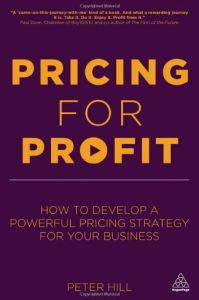Join getAbstract to access the summary!

Join getAbstract to access the summary!
Peter Hill
Pricing for Profit
How to Develop a Powerful Pricing Strategy for Your Business
Kogan Page, 2013
What's inside?
Increasing prices is the quickest and easiest way to increase profits.
Recommendation
Few aspects of business are as vital as pricing. All other things being equal, the higher your prices, the higher your earnings and profits. Given the primacy of pricing, it’s ironic that most executives who set prices don’t know what they’re doing, says veteran accountant Peter Hill. He discusses common pricing myths, explains how pricing works best and offers easy-to-implement pricing recommendations that could increase your profits. Pick the suggestions that fit your business: Not every car dealer needs to send out Christmas calendars or pens to bring customers back, though that suggestion fits Hill’s charming, down-home style. Hill says his pricing ideas “apply just as well to Apple as they do to the corner shop selling apples.” getAbstract recommends this smart, pragmatic manual to “CEOs, finance directors, sales managers, marketing analysts, accountants and strategic planners,” and to anyone who sells a product or service.
Summary
About the Author
Peter Hill is a partner at Mark Holt & Co Ltd. and Healium LLP. Hill is also a featured speaker on pricing and profit improvement.
















Comment on this summary